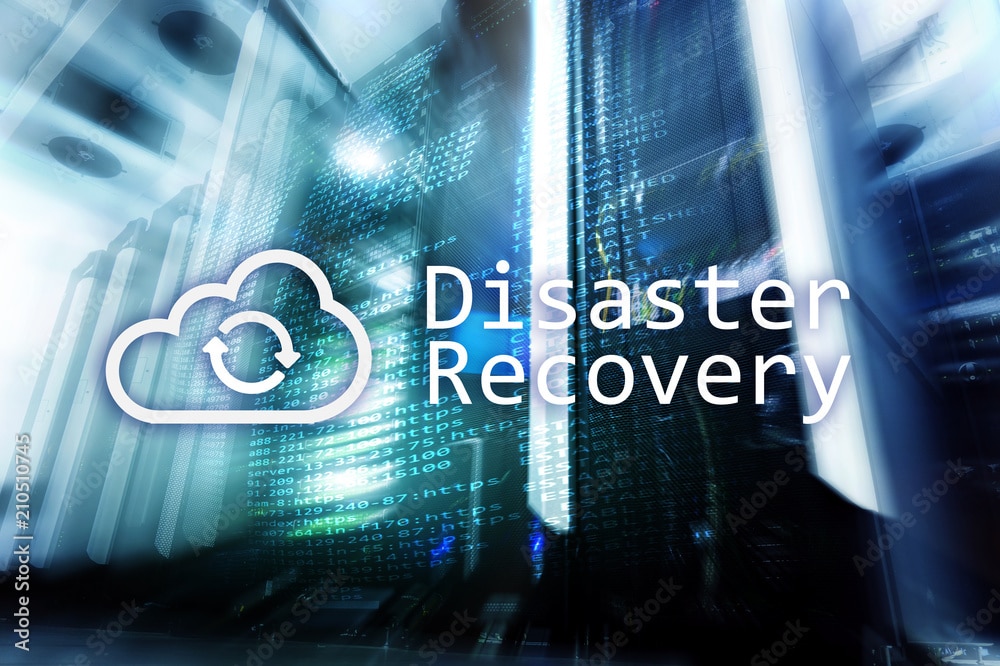What is a Disaster Recovery Plan (DRP)?
Even though DRP is an umbrella term for multiple types of disasters, let’s focus on Cyber attacks and Data Breach incidents, shall we? These plans include but are not limited to Virtual, Cloud, Network, Data Center protection, and restoration.
Doubling as the best Cyber Hygiene Practices, Disaster Recovery and Data Back-Up Plans provide the necessary tools to restore business continuity after an accidental or malicious attack. Companies with active DRPs report fewer adverse effects in disaster situations. Why? They always delegate and maintain excellent Recovery Plan Management. These teams tap into information extraction through extensive in-house research, consultations, risk assessment evaluation, data analysis, etc.
Whether a disruption has natural or man-made causes, the primary objective of a DRP is to restore business continuity in the most efficient and timely manner. Focusing on superior data management and reduction of disaster-induced downtime, the best Disaster Recovery Plans recognize and address unique company objectives. Depending upon the company, there are multiple avenues and approaches to get this done. When it comes to protecting critical assets and avoiding downtime, Cyber Security oftentimes is overlooked as a crucial step in the risk management process. While Disaster Recovery will generally include emergency plan components for Cyber Attack disasters, Security Recovery Plans (SRPs) are created solely as stand-alone’s, dealing with only Cyber Crime Disasters. For the sake of this blog and our valued reader’s sanity, both will be combined under the term DRP for a better understanding of the full spectrum of these plans.

How to Establish and Prioritize Your Specific Data Recovery Objectives
In the event of a disaster, how much company downtime can you afford and how much system data are you willing to permanently lose?
While it isn’t typically feasible, a betting person would most likely put money on this answer: “NONE, please and thank you.” With professional guidance in Disaster Prevention and Recovery Planning, this ideal answer becomes realistic.
What about the cost and what is our budget?
Personalized plans for disaster recovery can be cost-effective while also efficient. Depending on your budget, needs, and wants, you can start conservatively, purchase the Ford Focus or go full send and drive off in the Cadillac. As this topic becomes more familiar, you’ll have a better understanding of available options.
Which processes are most critical for our business?
This one is pretty obvious but can also be overlooked. What is included in the bare minimum to keep current production? Which ones will wreck productivity entirely if compromised? If company decision-makers can’t rattle off this list of essentials, the top DRP creator in the world will be of minimal assistance in Disaster Response.
How penetrable are your IT assets?
Again, another obvious question to assess Risk. The first question to ask yourself is what you have, then you can ask how to protect it. For example, your website having proper security protocols, fixing broken links, & utilizing CAPTCHA to reduce email spam are a few items that you should review for protecting your website.
Do you Test your Data Backup Plan?
A DRP is a living document involving the necessity for excellent communication between entry-level employees up to management. The sustainability and effectiveness of a Disaster Recovery Plan are only as valuable as the collective team response. Ideally, you want to identify which type of backup, cold site, warm or hot site, and test those processes to ensure they are implemented properly.
If my company decides against creating a DRP?
Never underestimate the power of risk transference comfort. Everyone purchases the same concept with car, home, boat, or nursing home insurance. You may never cash in on the benefits, but peace of mind and financial safety are valuable. Unfortunately, unpredicted incidents without a current and consistent recovery plan tend to come in like a wrecking ball. A company with weak safety protocols has little protection against the volatility of unknown risks. Fortunately, it is NEVER too late to change your mind and initiate Disaster Recovery Planning.
Disaster Recovery Plan Components: Strategies, Tools, and Services
Why and how do they work? First, reflecting on the importance of Cyber Hygiene can aid in the DR (Disaster Recovery) strategy and implementation. Review our What is Cyber Hygiene blog for a memory refresher. Incident response is a highly organized approach to addressing and managing the aftermath of Security Breaches and Cyber Attacks. Examples may involve affected employees, damage to information systems, loss of data, repercussions of stolen data, handling customer concerns, outside media involvement, and creating updated strategies based upon recent attacks.
There are a few different phases of a Disaster Recovery Plan:
Prepare: Prep Matters. Not only is this the first step, but also the most important for the short-term and long-term health of a business. Preventing an incident is much easier than repairing it. Data backups, one of the most crucial components, can completely eliminate any risk of data loss. With a few options available, many companies choose by budget. Ideally, they will have 2 or 3 separate forms of Data Backups consisting of Cloud space, Virtual, or on-site and off-site hard drives. Employ as many of these as possible to minimize the damages in any disaster.
Threat Detection and Containment: Recognize disaster situations as quickly as possible. No matter how little prep time is available, jump on setting your DRP into action ASAP. Employees will immediately initiate emergency communication plans with urgent delivery. Time can be your best friend or your worst enemy. Reaction time and efficiency need to be considered at all times.
Investigation: Not all threats will be obvious. Many security incident responses require detailed root cause analysis, evidence collection, preservation and a coordinated if not somewhat stealthy approach.
Eradication and Recovery: After all evidence is preserved and the threat has been eliminated, a company must start the business of recovering. This operation could be very different for each company but any personalized DRP should outline how this will play out.
Continuous Monitoring: This phase is fundamental in maintaining the most current security procedures. Learn, adjust and repeat. Even though follow-up is specific in this context, it includes education that should happen multiple times a year. Keeping up with current threats, how to prevent and combat them, and recognizing the best opportunities for team training are part of the overall functionality of any DRP. Continually educating first response team members benefits any business in a couple of different ways. It ensures knowledge is always fresh and any plan changes are communicated immediately.

Knowledge is Power. Minimize risk with Disaster Recovery Plans.
Now you know the importance of protecting assets from unforeseen security attacks. Proactive education is vital! Becoming knowledgeable about expectations and DRP goals will help establish your personalized recovery objectives. In turn, this will benefit your search for the perfect DRP team. In the wise words of a famous cartoon character, “Knowing is half the battle.” So take a few minutes, jot down some notes about your business’s continuity needs, visit our site, and set up a consultation. Then, we’ll take the reigns and devise the perfect Disaster Recovery Plan for your company.
If you would like to review your Cyber Security practices/policies/systems, contact OQP Solutions to set up a consultation!
